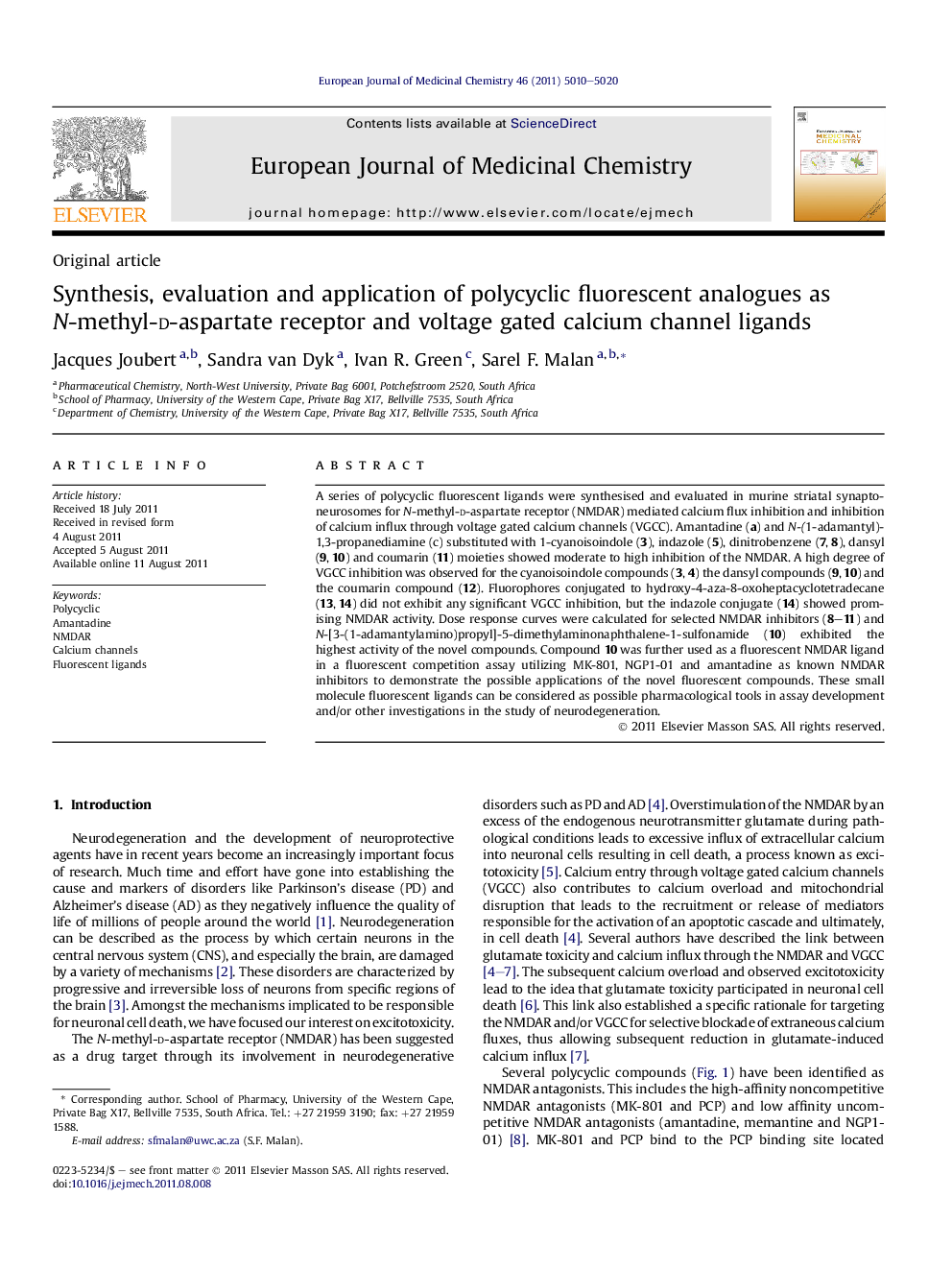| Article ID | Journal | Published Year | Pages | File Type |
|---|---|---|---|---|
| 1394564 | European Journal of Medicinal Chemistry | 2011 | 11 Pages |
A series of polycyclic fluorescent ligands were synthesised and evaluated in murine striatal synaptoneurosomes for N-methyl-d-aspartate receptor (NMDAR) mediated calcium flux inhibition and inhibition of calcium influx through voltage gated calcium channels (VGCC). Amantadine (a) and N-(1-adamantyl)-1,3-propanediamine (c) substituted with 1-cyanoisoindole (3), indazole (5), dinitrobenzene (7, 8), dansyl (9, 10) and coumarin (11) moieties showed moderate to high inhibition of the NMDAR. A high degree of VGCC inhibition was observed for the cyanoisoindole compounds (3, 4) the dansyl compounds (9, 10) and the coumarin compound (12). Fluorophores conjugated to hydroxy-4-aza-8-oxoheptacyclotetradecane (13, 14) did not exhibit any significant VGCC inhibition, but the indazole conjugate (14) showed promising NMDAR activity. Dose response curves were calculated for selected NMDAR inhibitors (8–11) and N-[3-(1-adamantylamino)propyl]-5-dimethylaminonaphthalene-1-sulfonamide (10) exhibited the highest activity of the novel compounds. Compound 10 was further used as a fluorescent NMDAR ligand in a fluorescent competition assay utilizing MK-801, NGP1-01 and amantadine as known NMDAR inhibitors to demonstrate the possible applications of the novel fluorescent compounds. These small molecule fluorescent ligands can be considered as possible pharmacological tools in assay development and/or other investigations in the study of neurodegeneration.
Graphical abstractCompound 10 was used as a fluorescent NMDAR ligand in a competition assay utilizing known NMDAR inhibitors.Figure optionsDownload full-size imageDownload as PowerPoint slideHighlights► Fluorescent polycyclic compounds with calcium channel activity were synthesized. ► Significant NMDAR antagonistic activity was observed for 7 compounds. ► Four compounds exhibited significant voltage gated calcium channel inhibition. ► As application, compound 10 was used in a fluorescent NMDAR competition assay.
